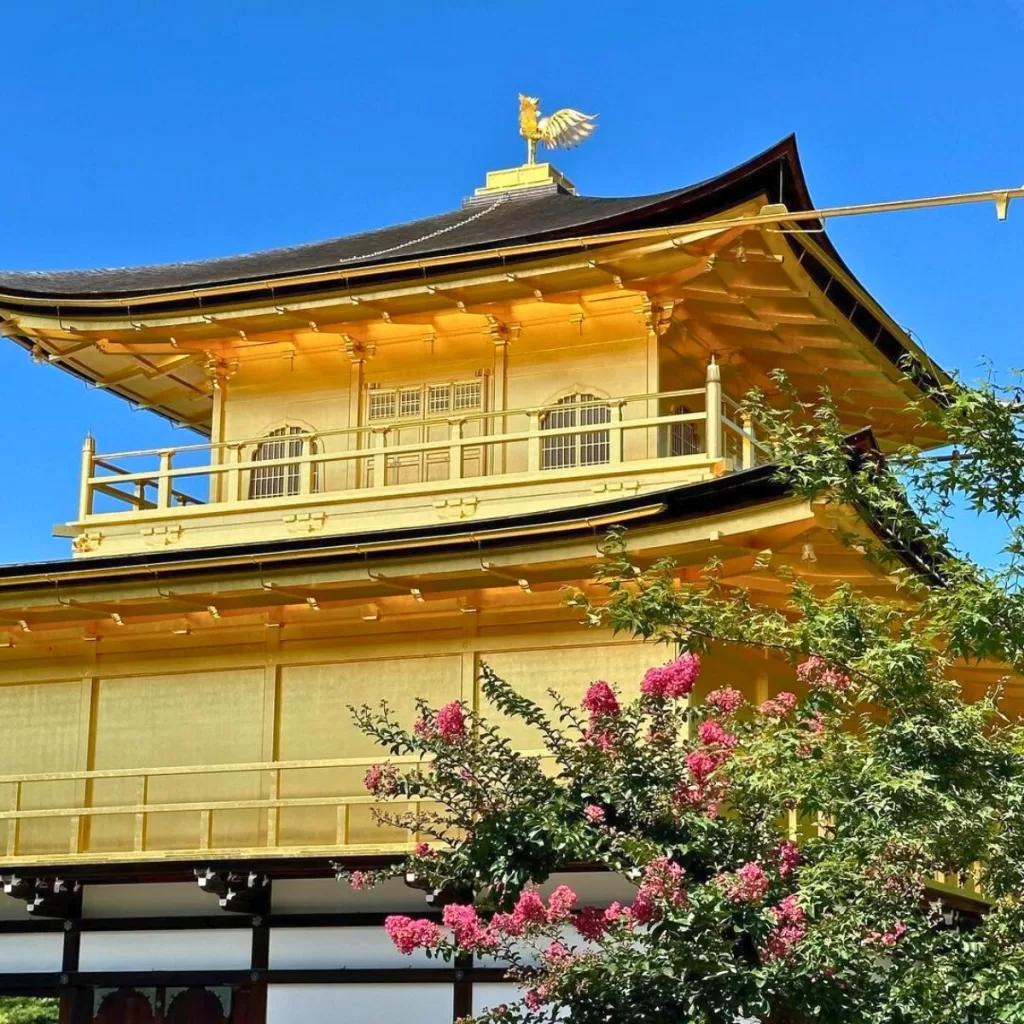Kinkaku-ji: Kyoto’s Iconic Golden Temple
History of Kinkaku-ji
Affectionately known as the Golden Pavilion, Kinkaku-ji Temple, originally built in 1397, is one of the most magnificent structures in Japan. This Buddhist temple in Kyoto, which was termed a UNESCO World Heritage site, was once the retirement villa of shogun Ashikaga Yoshimitsu. According to his wishes, upon his death in 1408, the villa was converted into a Zen temple of the Rinzai sect.
The original structure didn’t survive long due to being burnt numerous times across centuries. The tragedy was extended during the Onin War and finally in 1950 when a novice monk devastated it by fire. It was then meticulously restored according to the original design and subsequently rebuilt in 1955.
The original statue of Ashikaga Yoshimitsu is preserved within this golden temple alongside statues of Buddha – Kannon, goddess of mercy, and Fudo Myoo, believed to have been carved by Kobo Daishi.

Structure of the Golden Pavilion
The striking gold leaf-covered pavilion exhibits three distinct architectural styles from the Heian Period, reflecting Ashikaga Yoshimasa’s affinity with traditional Japanese aesthetics. The Shinden style on the first floor compliments aristocratic taste, while the temple building boasts Chinese Zen style on the second floor – Bukke. The upper stories of the Pavilion are completely covered in gold leaf that shines over a reflective mirror pond said to never dry.
The final floor is designed as a Zen meditation hall embodying traditional Samurais’ modest but practical spirit. This third level, titled “Kinkaku,” meaning golden Pavilion, is covered entirely with thick gold leaf, capturing viewers’ hearts with its dazzling reflection on Kyoko-chi pond below it.
Visit Kinkakuji: Travel Guide
Though you cannot enter the Pavilion itself, you can still enjoy admiring its beauty from afar across the pond, where you’ll find an iconic photo spot treasured by tourists. After quietly taking in this glistening spectacle across ‘Mirror Pond,’ tourists can further explore the enchanting strolling garden, showing glimpses of small temple buildings within this complex along with statues covered in moss.

Visiting Kinkaku-ji will cost an entrance fee but is well worth a visit for its scenic beauty and impressive architecture steeped so richly in history. As you exit, souvenir shops nearby offer a variety of Kyoto specialties.
Additionally, visitors also have an opportunity to enjoy Matcha tea and sweets at Sekka-tei Teahouse, nestled inside temple grounds, while immersing themselves in serene garden views.
Getting to Kingakuji Temple
Nestled among northern Kyoto’s mountains lies this beautiful temple located only two kilometers from Ryoanji Temple or approximately a minute city bus ride from JR Kyoto station (Bus number 205). Nearby sites include Nijo Castle and Kitano Tenmangu shrine, providing ample places in Kyoto to explore during your trip to Japan.
Kyoto city bus line from JR Kyoto Station directly leading there isn’t hard to navigate. Just hop on bus #205, which will take you straight there, making Kingakuji Temple a key part of any travel guide itinerary for those visiting Kyoto.
Final Note on Kinkaku-ji Temple
Even though Kinkaku-ji temple wasn’t able to escape fires entirely throughout history due to wars or disasters leading it to be reconstructed several times until its last rebuild in 1955, it has still managed to retain its majestic allure captivating hearts with its stunning golden view and tranquil aura. Tourists treasure this heritage site for giving them an enthralling experience, shooting them back into Japan’s historical past while allowing them a chance for peaceful introspection as they stroll through beautiful gardens brimming with ancient wisdom and elegance. In comparison with many other places in Kyoto or even temples located elsewhere around Japan, you’ll find there’s something uniquely alluring about Golden Pavilion that sets it apart, making it an integral part of your trip to Japan.